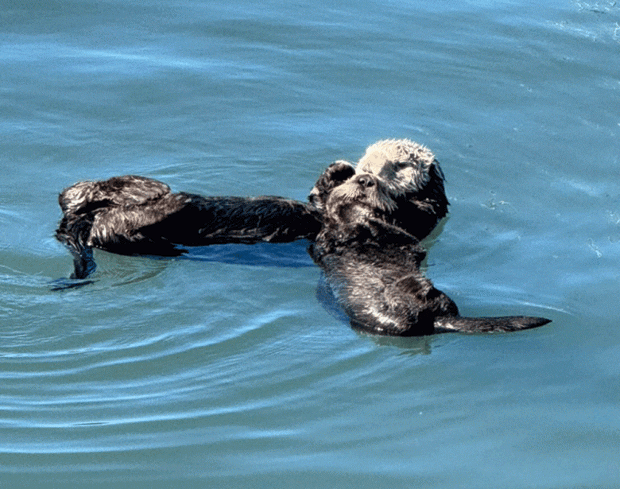
by Karen Telleen-Lawton, Noozhawk Columnist (read original in Noozhawk here)
March 10, 2025 | 3:00 pm
I asserted in a recent column that the Precautionary Principle had been violated in the proliferation of the permanent pollution of plastics.
The feature documentary “Plastic People – the Hidden Crisis of Microplastics” outlines more graphically the effect of this self-inflicted invasion. For the sake of hope, this column will peek at some approaches to solutions.

Locally, Santa Barbarans do a relatively decent job of recycling. Check out the Tajiguas ReSource Center, which gives tours of its state-of-the-art recycling facility.
Ablitts Cleaners accepts plastic film through the nonprofit Planet Protectors. Over 2,000 people and organizations have already signed up for plastics recycling services, according to Neal Ablitts.
Yet, “We cannot recycle our way out of this,” declares Nivedita Biyani, a researcher at UCSB’s Benioff Ocean Science Laboratory (BOSL). “We need countries and companies to come on board to help limit the amount of plastic going into our oceans and larger environment.”
Consumer goods companies can improve by using resource-friendly packaging. In our market-based system, this requires consumers to demand packaging and products designed with the whole life cycle in mind.
Senate Bill 54, the Plastic Pollution Prevention and Packaging Producer Responsibility Act, can also help. It seeks to incentivize the supply end by moving the pollution cost from consumers to producers and packagers.
Like recycling, however, consumer efforts don’t match the level of the problem. California Attorney General Rob Bonta is going to the source.
Bonta’s lawsuit against Exxon Mobil alleges the large producer of petroleum-based polymers deceived the public about the potential for plastic recycling. The resulting damage, including overwhelmed waterways and oceans, sickened marine life, and threatened human health, costs the state billions of dollars.
The state’s lawsuit alleges Exxon Mobil gave the American Chemistry Council $19.4 million to run a deceptive ad campaign about so-called advanced recycling from 2020 to 2023. They also co-opted the triangular “chasing arrows” recycling symbol to imply the products are recyclable.
The lawsuit seeks to prohibit the description of a practice developed in 1978 as “advanced recycling.” Jane Williams, executive director of California Communities Against Toxics, argues against this “greenwashing.”
“They are using the same technology we’ve had since the Industrial Revolution. It’s a coke oven, a blast furnace,” she said.
The complaint asserts that the recycling rate in the U.S. has never exceeded 9%.
A companion lawsuit was filed by an environmental consortium including the Sierra Club, Surfrider Foundation, Heal the Bay and Baykeeper.
Beyond lawsuits and consumer action, research is a rich area for resolving the plastics debacle.
Shirel Kahane-Rapport, of CSU Fullerton, works on bioengineering solutions to removing plastics from the water systems. She is investigating whales’ sieve-like baleen for clues on how to filter out plastic fragments in wastewater treatment systems.
The most far-reaching research may be an analysis involving plastics researchers, data scientists and AI researchers at UCSB’s Bren School and UC Berkeley’s Schmidt Center for Data Science & Environment.
Using data on population growth, economic trends, plastic production, and pollution, the group designed an analytical tool to predict actions that would make the most difference in solving the plastics problem.
The analysis shows five straight-forward actions which, if adopted by major nations, could end plastic pollution by 2040. These actions are:
- A minimum recycled content commitment.
- A cap on production of virgin plastic.
- Investment in plastic waste management infrastructure.
- Similar investments in new recycling capacity.
- A small tax on plastic packaging (e.g., items like plastic bags).
“I confess that when I first saw these nations promising to end plastic pollution by 2040, I thought that this would be impossible,” admits Douglass McCauley, director of BOSL and associate and adjunct professor at UCSB and Berkeley, respectively. “I was blown away to discover a pathway to near-zero in this research.”
For consumers, plastic pollution still boils down to the R’s: Refuse, Reduce, Reuse, Repurpose, Recycle, Return, Refurbish. But the enormity of the problem suggests an additional R — Relate.
Relate to your representatives that you understand the health of our economy requires the health of our planet.
Relate to your representatives that you will hold their feet to the fire to make agreements to solve plastics pollution.
These five actions can purchase freedom from plastics by 2040.

Karen Telleen-Lawton is an eco-writer, sharing information and insights about economics and ecology, finances and the environment. Having recently retired from financial planning and advising, she spends more time exploring the outdoors — and reading and writing about it. The opinions expressed are her own.

